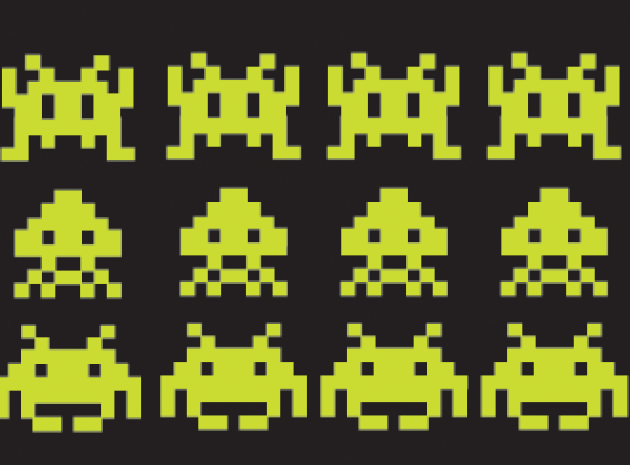Katie Masters investigates the rise of serious fun in schools…
Student. Such a simple word to encompass such a wealth of personalities (and provoke such a variety of reactions). But it’s not the only umbrella term that’s capable of dividing opinion amongst teachers. Over the last few years another phrase has been creeping into classrooms, causing indifference, ecstasy and everything in between. What is it? Game-based learning. In its broadest sense, game-based learning simply means using computer games as a tool to support teaching and learning. That could be students playing a straightforward game like 1066 (freely available on the Channel 4 website), the back story of which is Harold Godwinson’s eleventh century contretemps with Duke William of Normandy. It could be ‘gamification’: using the language and techniques of game-playing within traditional lessons (for example, having a ‘mission’ rather than a ‘learning objective’).
Alternatively, game-based learning could be an activity like the one undertaken by children in a Bradford primary school earlier this year. Researchers from the University of Leeds, in partnership with the Bradford Institute of Health Research and the University of Indiana, were trialling a new way of supporting children to learn to write. They asked a small group of five to seven year olds to play computer games, which had been designed to help them practise the hand and wrist movements necessary for writing. As the children played these games a robotic arm helped to guide them: pushing and pulling the pen to help the children make the correct movements. The more confident the children’s movements, the less support the arm supplied. For Dr Liam Hill, one of the researchers leading this project, the way that games and computerised technology can be quickly adjusted to suit the individual is one of the key benefits of game-based learning.
They can learn at their own rate and this will enhance their motivation levels. We can do a lot through pedagogy but if a child feels in some way excluded (maybe due to a lower ability level) their delayed progress will become compounded by an allied lack of motivation…”
“This pacing issue means that each individual child is operating at a comfortable, yet challenging level,” he explains. “They can learn at their own rate and this will enhance their motivation levels. We can do a lot through pedagogy but if a child feels in some way excluded (maybe due to a lower ability level) their delayed progress will become compounded by an allied lack of motivation.”
Dr Hill also points to the fact that game-based learning is engaging and fun for most children – a point ratified in the National Foundation for Education Research’s recent report into game-based learning. This report, published in April 2013, reviewed the current literature to assess the impact and potential impact of game-based learning on learners’ engagement and attainment. The studies they looked at found – consistently – that video games can impact positively on students’ problem-solving skills, broader knowledge acquisition, motivation and engagement. The NFER did say that the literature they reviewed had some gaps. The studies they looked at didn’t examine whether the positive impact of game-based learning could be sustained over time, or demonstrate conclusively that this approach had a positive impact on students’ attitudes towards learning. But the report did indicate that there were ‘promising results’ and suggested that more research should be done.
Mix it up
Sara de Freitas, Professor of Virtual Environments at Coventry University, says that a useful point of comparison is to look at the studies that have been carried out over the last 10 years, comparing traditional learning with e-learning.
“Those studies showed that there was no significant difference in gains when you compared e-learning (learning via ICT) with traditional learning,” she says. “But what the studies did show is that when you compare either e-learning or traditional learning with blended learning – using both tools – the blended learning showed a significant difference over the other forms. Game-based learning is newer, but I think we’ll find the same effect.”
And, she adds, her experience is that teachers and parents are excited by the possibilities of game-based learning, because they are aware how engaging children and teenagers find it. Where they do cite difficulties is around the issue of infrastructure. “There are constraints for teachers that are out of their control when it comes to using game-based learning,” agrees Denise Whitelock, Professor of Technology Enhanced Assessment and Learning at the Open University. “Having the hardware is the biggest problem, but it’s also about knowing which software to buy and how to assess which software will be the most useful.” Added to that problem is that new games are being developed all the time and old ones cease to be maintained. So how are teachers – with 1001 other responsibilities – expected to find time to research the resources?
Pressing the right buttons
Sadly, there is no central database of rated, reviewed educational (serious) games. The best ways to see what’s available are to ask other teachers, look in your subject association’s publications for game reviews, or even to contact the software makers directly and ask for demos of games they feel would fit into your curriculum.
When you do find a game, a key consideration is whether the content will be appropriate for the age group you’re teaching. Most European game publishers support the PEGI (Pan European Game Information) rating. This is a logo that shows the minimum recommended age for playing the game, plus icons on the back of the box, which show if there’s anything you need to be aware of in the content (drugs; bad language; sex etc). But the most important thing is to test play the game yourself. Check that the language and user interface can be negotiated by the students, that the game can be muted if necessary and that it can be saved at any point and re-started at the same point at a later date (in case a lesson is cut short). If it is a game that is played online and involves networking, like chat or messaging, make sure that there are mechanisms to prevent bullying or otherwise inappropriate interaction.
One useful resource is the handbook for teachers, Digital games in schools, which was published by European Schoolnet in 2009 and is available to download at tinyurl.com/tictgames. It has a section of tips on how to assess a game for its pedagogical value, including making sure that the game has an easy learning curve, illustrates useful concepts, shows clearly how the learner is progressing and provides gentle feedback. There also needs to be support from the senior management of the school to allow teachers the time to think about ways of bring game-based learning into lesson and to think about these new ways of learning.
“It’s useful to have teachers looking at alternative pedagogies,” comments Karl Royle, research project director at the University of Wolverhampton’s Centre for Development and Research in Education. “It’s not just about thinking, ‘Where does this fit into my curriculum?’ it’s also thinking about how tapping into this interest in games can help to bridge the gap between formal and informal learning. A school in Scotland brought secondary school students into play the popular game Guitar Hero with a Year Six primary class. They were using a computer game to build groups – as a way of easing the transition from primary to secondary. But teachers need time to think about computer games and the skills they can help to develop.”
The message is that game-based learning will bring benefits for educators. But they need to be supported and given the time and resources they require to incorporate it into their lessons. It is not the games that will make the difference. It is the teacher. “Game-based technology is a tool for teachers,” repeats Dr Hill. “Used effectively it can add a lot in terms of helping the teacher track the progress of their students. It can enhance the opportunities for students to practise various skills. It’s engaging and fun. But it can’t replace teachers. The human element in teaching is critical to encourage and inspire.”











Katie Masters investigates the rise of serious fun in schools…